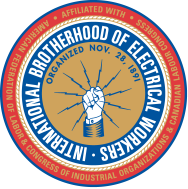Recruiting women into the trades is getting a little easier Lisa Langevin has found over more than 15 years as an electrician. But getting them to stay is another story — even as construction is booming across British Columbia.
That’s why the Vancouver Local 213 assistant business manager welcomed a chance for the IBEW to be part of the provincial government’s Women in Trades project, which identified barriers to women advancing in construction and suggested ways to eliminate them.
Recruiting more women into the trades has been a battle in both the United States and Canada, but the report is significant because it identifies obstacles to keeping women on the job, not just in attracting them to apprenticeships.
“Across North America, we’ve been talking about women in the trades for decades,” said Langevin, who was part of the project’s 10-member steering committee and has long been an advocate for women in the construction industry.
“What we’ve found is that women aren’t staying. The percentage of women leaving the trades is much higher than men leaving the trades.”
Langevin said the project’s need was obvious when she and a researcher traveled around the province to meet with focus groups of women currently working in the trades. Even those who stayed reported being harassed and ostracized, she said.
B.C. Minister for Advanced Education, Skills, and Training Melanie Mark met with apprentices at Mott Electric, a Local 213 signatory contractor, in Burnaby last November to announce the study’s completion. Langevin was among the speakers, where she noted women still make up only about 3 percent of the tradespeople in the province.
The report recommends increased mentorship opportunities, noting that female construction workers often find they are the only woman on a jobsite, and the implementation of anti-bullying policies.
“Employers have a responsibility to create a worksite that is supportive of all workers,” said Dan Mott, the company’s president.
The project is not provincial law, but plans are to use it as a tool to address the ongoing shortage in skilled trades workers.
There are expected to be 115,000 job openings in British Columbia trades by 2025 due to retirements and economic development, according to provincial government estimates, and those likely can’t be filled without more women on the job. The median wage for a B.C. trades worker two years after completing his or her apprenticeship is $60,000 per year, a number that’s even higher in the electrical industry.

Vancouver, British Columbia, Local 213 assistant business manager Lisa Langevin, back row right, with other members of the local’s women’s committee on a Vancouver jobsite.
The next step for advocates is to work with private industry to develop policies that promote anti-bullying, prevent harassment and encourage adoption of inclusive hiring practices.
“We need to fix the workplace culture so it’s a place that women feel respected and valued,” Mark said. “Women who want to pursue careers as electricians, sheet-metal workers or other trades should be supported and given opportunities in careers that will help build the best B.C.”
Langevin said the project became a priority when the British Columbia New Democratic Party took power in 2017. Government officials usually mean well when they encourage greater female participation in the workforce, she said. But too often the focus is on jobs outside of the trades. A necessary next step is providing hiring goals on public-works projects — something Langevin is optimistic about.
“When we talk to female politicians, we find many are focused on things like child poverty,” Langevin said. “One of the things we’ve pointed out to them is if you give moms good paying jobs, one of the things you reduce is child poverty.”
Although not directly addressed in the report, Langevin said men in the trades need to become partners in empowering women, standing up for their female co-workers if they see them being treated poorly.
“I’ve heard from guys who will quietly come say to me, ‘Hey, we’re glad you’re here, we’re hoping things will be better now.’ Most guys don’t like nastiness on the job either.
“Now, we want to give those guys the skills to stand up to others when they see something and say, ‘Hey, that’s not right.'”
Langevin considers herself fortunate. Local 213 Business Manager Adam Van Steinburg fully supported her involvement with the report and in other initiatives to support female workers. She is hoping other business managers in the trades adopt the same attitude.
“I think 213’s largest asset,” she said, “is that we were willing to stand up and say, ‘Yes, this is important.'”
Check out more from this month’s Electrical Worker here.



